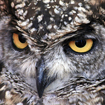Teaching Practice 1: Lesson 1 Activity 1
LS A1-A2 level
Description
Materials
Main Aims
-
Learners will be able to recognise the difference between vertebrates and invertebrates; classify animals into groups and identify and describe key features of animals in each group
Subsidiary Aims
-
Linguistic: Learners will be exposed to lexis relating to animals and use these in a classification activity to introduce language relating to features and groupings
-
My Learning Aim: By the end of my lesson slow learners will have been introduced to and practised lexis relating to animals and completed the activity classifying them into invertebrates and vertebrates.
-
Non-Linguistic: Group work, negotiation, leading to project work
Procedure (28-40 minutes)
1. Take the register, ask students a warmup question "what's your favorite animal" as we go around. 2. Tell students about the project to create a magazine 3. Elicit 3 rules for class, refomulate in positive sentences ie " We keep our phones in our bags", "we put up our hands to answer questions", "we use quiet voices to talk to each other" 4. Group students into working groups of 3-4
1. In groups, students try to find one animal for each letter of the alphabet. Teacher circulates and helps with vocabulary. Activity ends when the first group completes the alphabet. 2. Feedback from whole class on board and elicit spellings of difficult words.
1. Introduce the task of classification by eliciting common differences that animals have. Say "In this lesson we will learn how to classify animals and indentify and describe different feature of animal groups. Elicit examples of different features eg. Fur, Scales, Wings. Say "We're going to write about different animal groups for our magazines". 2. Ask students to classify the animal cards into two different groups based on something that is the same about them, eg. Where they live, what they eat, their bodies etc. Set time limit 3 minutes 3. Feedback groups to class 4. Establish that all animals can be put in two groups. Teach "backbone", and elicit from students "invertebrates" and "vertebrates". 5. Ask students to re-do the task based on this classification. 6. Feedback on board with two students from two different groups.

